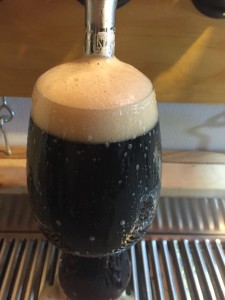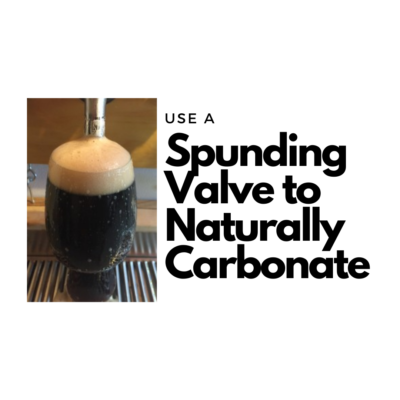
Naturally Carbonating in Your Fermenter with a Spunding Valve
A Spunding Valve allows you to maintain a set pressure. If pressure in the vessel exceeds the set point, it is expelled. It generally consists of an adjustable PRV valve, a tee, a gauge and a way to connect to your keg.
Why a Spunding Valve?
There are loads of homebrew related applications for a Spunding valve ranging from pressurized ferementation to naturally carbonating to fixing over carbonated beers and lots more. Check out our resource post on the subject. It’s arguably the go-to resource on the Internet on the subject
Naturally Carbonating with a Spunding Valve
Carbonation directly in your keg allows you to naturally carbonate your beer (saving CO2 and $) while maintaining reasonably tight control on carbonation levels. This could be done by adding priming sugar, capping fermentation prior to the completion of fermentation or more traditional krausening (adding wort back to the fermenter).
Basic Steps for Carbonating in a Keg Using a Spunding Valve:
- Ferment in a pressure capable fermenter. A 5 gallon keg works for small batches. Other options are available for larger batches including this like 10 gallon kegs.
- Prime the keg with your choice of priming sugar or wort (or start this process late in fermentation when some fermentable sugars remain)
- Determine your desired pressure based on temperature and desired carbonation using a carbonation chart. See: Balancing Your Draft System for a carbonation chart.
- Pressurize the keg to just over your desired final pressure.
- Attach the Spunding Valve
- Slowly dial down the pressure until you achieve your desired pressure – More about setting pressure
- Wait. As the remaining simple sugars are fermented, carbonation occurs and excess CO2 will be expelled from the spunding valve giving you just the right amount of carbonation. I give it a couple days after reaching target pressure. If you’re less sure how much fermentable sugar remained, I would suggest giving it a few days longer.
- Chill your keg, allowing your beer to absorb head space CO2 and reach equilibrium.

This is a 2.5 gallon batch of beer that I fermented and naturally carbonated all in a 5 gallon keg. I poured this immediately after it was transferred from the fermenter keg into a serving keg.
This write-up is part of my Spunding Valve Resource Post – Jump To This Section
More Homebrew Finds!
- Last 50 Finds!
- Top Deals – a curated list of the best deals
- Homebrew Reviews – one of the largest libraries of homebrew reviews in existence!
- Our Top Posts – tips, how-tos, resources posts and more
- Let’s be Friends!
Let’s Be Friends!
Subscribe To Our Email! – 8 Ways to Connect with HBF
Quick Catch-Ups
- Our Last Fifty Finds
- Curated List of Keg Deals
- Curated List of Hop Deals
- Our 10 Most Recent Homebrew Resource Posts
- Top Deals – a curated list of the best of the best
- Our 10 Most Recent Reviews
Top Content
- Our Top Draft and Kegerator Resource Pages
- Our Top Posts – a huge library of how-tos, resources posts & more
- Our Massive Library of Reviews – view the entire list of use our Review by Categories to find just what you’re looking for
This post may contain affiliate links. We may make a commission when you use our links. This will never cost you extra. Thank you for supporting Homebrew Finds!
greatdealsMake sure the components you use are compatible and rated for your intended application. Contact manufacturer with questions about suitability or a specific application. Always read and follow manufacturer directions. top:spundingvalvelnksto lnksto:spundingvalve rp:lnksspundcarb










